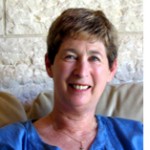By Dorothea Shefer-Vanson

MEVASSERET ZION, Israel — I know I’ve written before about Verdi’s Requiem, the role it played in my childhood and musical education in general, about the impression made on me when I read of its performance by prisoners in Theresienstadt and finally being privileged to attend a performance of the reconstruction of that event here in Jerusalem. But I can’t help going back to its splendour and magnificence after hearing yet another live performance a few days ago, once again in Jerusalem.
The Henry Crown auditorium of the Jerusalem Theatre isn’t the best venue for hearing the performance in terms of acoustics, but to enter the hall and find the greatly augmented Jerusalem Symphony Orchestra and the two choirs sitting there, all arrayed in their uniforms (both women’s choirs all in black, both men’s choirs in white shirts, ties and dark trousers), waiting to start the performance, created a festive and inspiring atmosphere before even a single note was played.
When maestro Frederic Chaslin strode onto the stage and raised his baton the atmosphere was electric. The men’s choir began to sing in muted, pianissimo tones, imploring the deity to have mercy, forgive the dead their sins and grant them eternal rest. The music then swells into a full-throated prayer for deliverance. People say that listening to classical music in the comfort of their home with a good sound system is as good as attending a live performance, but I couldn’t disagree with them more. Nothing beats being there in person, hearing all the nuances of the voices (provided they’re good, of course), and being physically and emotionally overwhelmed and swept away by the power of the music.
The choirs sing out at the tops of their voices, the trumpets blare and the whole orchestra gives its maximum in the Dies Irae (which recurs several times in the piece), producing a fortissimo that sends a shiver down every spine in the auditorium and brought tears to many eyes, mine included. The impact was something immense and incomparable. It really inspired a sense of dread and awe and, as we’re all aware, old Verdi knew a thing or two about achieving dramatic effect.
And that set my thoughts wandering. There’s a clear line that connects the Book of the Dead of ancient Egypt, the Jewish prayers and supplications of Yom Kippur (the Day of Atonement) and the Christian requiem prayer. The Latin words, liber scriptum proferetur (the book of words is open), which feature in the requiem, echo the Jewish concept of God deciding who shall live and who shall die and writing it down in a book which is signed and sealed on Yom Kippur. I sometimes irreverently refer to this idea as ‘the Great Accountant in the Sky,’ but the concept is obviously one that has occupied humankind since time immemorial.
The Book of the Dead emerged in seventh century B.C.E. Egypt, when the culture of that country had already been in existence for several thousands of years. The concept underlying their religion was that life continued after death, and certain procedures, spells and rituals would ensure that this would indeed be the case. The Book of the Dead existed in many variations, but all were designed to ensure that the dead person would continue to enjoy the benefits of having lived an exemplary life.
So it might just be possible to regard the Christian requiem and the Jewish Yom Kippur ritual as just another series of prayers, incantations and rituals designed to ensure a happy hereafter for the person whose soul has passed on to that ‘bourne from which no traveller returns.’
Who knows, perhaps it might even help. But one thing is sure, the various requiems composed by such luminaries as Verdi, Berlioz, Mozart, Fauré and others continue to bring immense pleasure to the living.
*
Shefer-Vanson is an author and freelance writer based in the Jerusalem suburb of Mevasseret Zion. She may be contacted via dorothea.shefer@sdjewishworld.com. Comments intended for publication in the space below must be accompanied by the letter writer’s first and last name and by his/ her city and state of residence (city and country for those outside the U.S.)